Code Vein has somewhat been coined as “Anime Dark Souls.” That’s not too far from the truth.
Combat is a bit faster and less deliberate than in From Software’s series, and a lot of the danger comes from waves of enemies rather than a single terrifying one, but it is certainly not difficult to compare the two titles.
And that is not at all a bad thing.
Bandai-Namco’s souls-like is a blast to play, even if it is a bit rough around the edges. It’s close enough that it will quench your thirst for this style of game, but it isn’t as much of a clone with new dressing as it initially seems.
It scratches the “anime techno-vampire” itch we didn’t even realize we had.
Blood Beads and Gifts
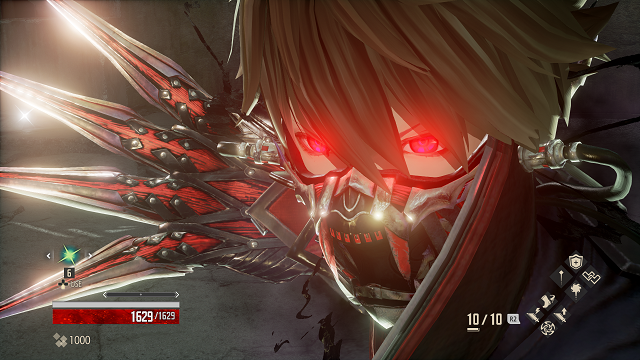
One thing that Code Vein does extremely well is immerse you in its bizarre world. This is a post-apocalypse full of vampires struggling to survive against tyranny and oppression. The only way for these vampires to survive is by hunting humans or finding “blood beads,” which are a naturally occurring blood substitute. Sort of.
There are a lot of twists and turns in the story, and it’s all very anime, which adds to the charm.
This vampire culture pervades all the dialogue and much of the story in Code Vein, and it allows for a bit of roleplaying on the player’s part. You aren’t going to make dramatic “Dracula will remember that” style choices, but I did find that choosing the armor that let me drink blood through a gigantic mechanical scorpion’s tail spoke to me more than a pair of metallic claws.
It just felt right to strike at enemies with that barbed tail. And Code Vein gives you lots of those little roleplaying options.
For example, there is an entire series of strange vocabulary words that you pick up as you play, but so much of it is rooted in traditional video game trappings that it fits in naturally. You’ve got a “Blood Code” (character class), “Blood Veil” (a hybrid of armor + fighting style), “Gifts” (spells and abilities), “Haze” (both experience points and money), “Ichor” (magic points), and so on and so forth.
All of these can be switched on the fly, too; if you die a few times against a boss, try equipping a new Blood Code and weapon to enter the arena with an entirely new strategy.
As expected in a game like this, you can still upgrade your favorites to make them stronger, but you’re never “all in” on a specific style. Leveling completely different styles at about the same pace is a boon in a few different ways as it will allow you to approach tough sections in different ways, and it will keep things from ever getting stale.
Building a Better Vampire
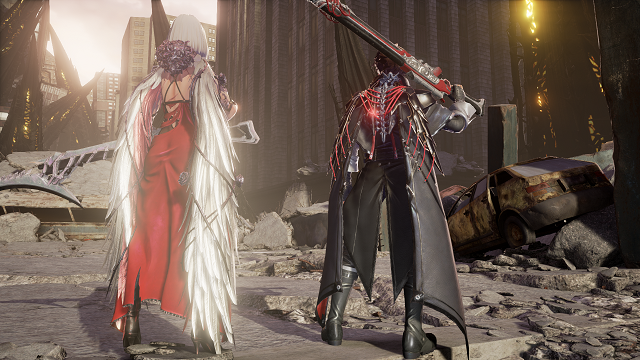
This all comes packaged with an impressive character editor and a wild combat system that simultaneously makes you feel powerful and horribly overmatched.
Dressing your character for battle is as easy as stopping by your home base and standing in front of the mirror; yes, even though you’re a vampire. Put on some elbow-length lace gloves and a giant cross necklace. Don your favorite floppy hat. Don’t forget the mascara. Now you’re ready to fight.
Code Vein carries that ethos over to its weapon types as well: rifles, swords, huge axes, rusty pieces of pipe. All of these weapons have different attack speeds, combos, and styles they are best suited for, and swapping through them to find the best combinations is one of the best parts of the game. You’re going to need to experiment in Code Vein, and once you get past the fairly simple opening section of the game, every scrap can be deadly.
Combat plays out much like a slightly looser Dark Souls. There’s still a level of deliberation that rewards you for studying enemies and understanding their capabilities, but things move a bit faster and smoother here.
You’re prone to getting surrounded, as enemies travel in packs, but this makes awareness and scouting essential, and also further encourages you to set up your character to play to your strengths.
Skills and Kills
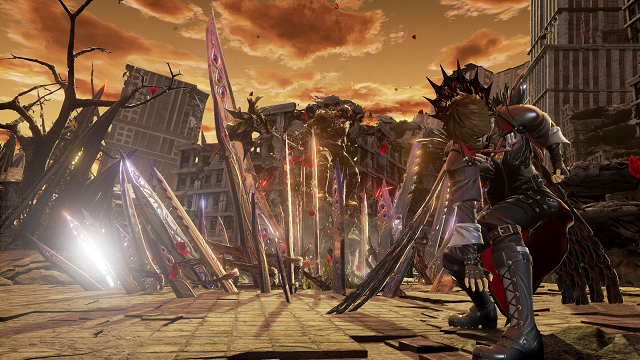
Another interesting aspect of Code Vein is how the abilities, called “Gifts”, work. Each Blood Code gives you several Gift options that you can unlock and use for a very small price in Haze — buffs and debuffs, active skills, and passive bonuses. You can then assign a number of these abilities to a hotkey and, as you hit later parts of the game, things get even more interesting.
Most of these Gifts are utilized with a corresponding Blood Code; the caster Code learns attack magic and shield spells, the fighter Code learns unique, weapon-based combos, etc. However, you can gain “Proficiency” with every Gift, which unlocks it to be used with any Blood Code equipped.
This allows you to put together some ridiculous ability combinations. Suddenly, your fighter Code has the ability to fire ranged spells. Your ranged attacker can imbue their weapons with all sorts of nasty status effects and put up massive shields.
This allows you to completely customize your character as you see fit and, again, nothing is set in stone. Farm some more souls… er, haze… and try out some new combinations.
Pobody’s Nerfect
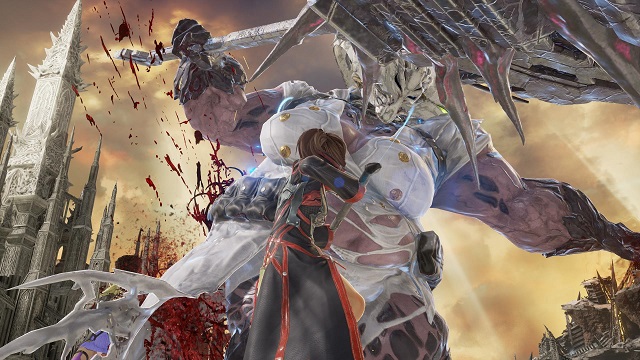
Code Vein has a lot of positives going for it. It offers tons of customization options and does let you feel like a badass techno-vampire battling against crazy bosses. However, there are a few things that hold it back from being a slam-dunk recommendation.
It looks… fine. The world is interesting, and as you reveal the story, it becomes moreso. That said, the environments are often pretty bland and same-y. A genius little map feature that outlines the path you last took is the only thing that keeps you from wandering the same path repeatedly, questioning whether or not you’ve been there already.
The character models are also fine, but they have some pretty glaring clipping issues. For example, my first character model often had a big hat on as I was feeling the Vampire Hunter D vibes. However, I had to change it as soon as I could. Why? Because nearly every cutscene has multiple shots from directly over your character’s shoulder. That giant hat was literally all I could see, rather than the roaring boss I should have been focusing on.
Hair regularly clips through clothes, too, and object textures rattle on top of one another. These little quirks stick out like a drop of blood on a pale, white neck and put a damper on a lot of the polish that the game has otherwise received. Maybe some fixes are on the way, but it seems doubtful.
The other issue is how similar a lot of Code Vein is to Dark Souls. There are literally aspects of the design — the “Mistle” (bonfires) you purify as you explore, the items you collect, the way traps are set up — that come across almost as lazy rather than inspired. It isn’t a problem, as Dark Souls has some impressive design, but it’s tough not to knock Code Vein a bit for its lack of inspiration in some regards.
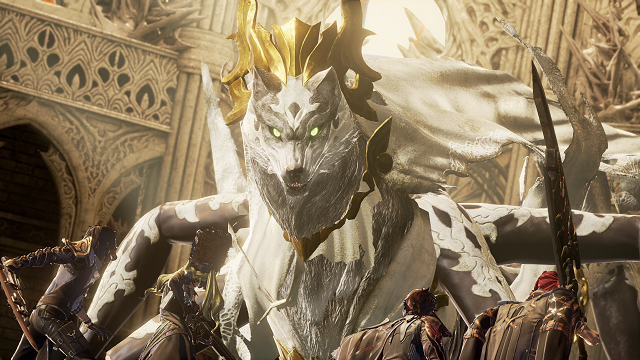
Pros:
- Tons of customization options
- Bizarre, interesting world
- Combat is intense and rewarding
- Bosses are a blast
Cons:
- Lacks polish, especially graphically
- Very derivative
Code Vein is one of those games that you can take a quick look at and immediately tell if it’s your speed. If you like the punishing combat of the souls-like genre and want an injection of anime style, you can’t go wrong here.
It’s by no means perfect, and a lot of small details factor in to leave it less polished than it should be, but anyone who isn’t turned off by the style or difficulty is going to have a good time with this Dark Souls-inspired RPG.
[Note: A copy of Code Vein was provided by Bandai-Namco for the purpose of this review.]

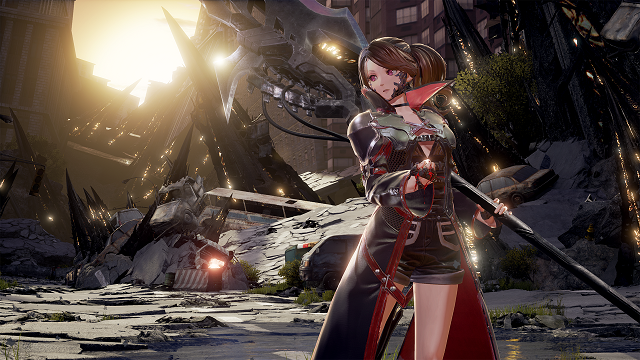





Published: Sep 25, 2019 02:35 pm